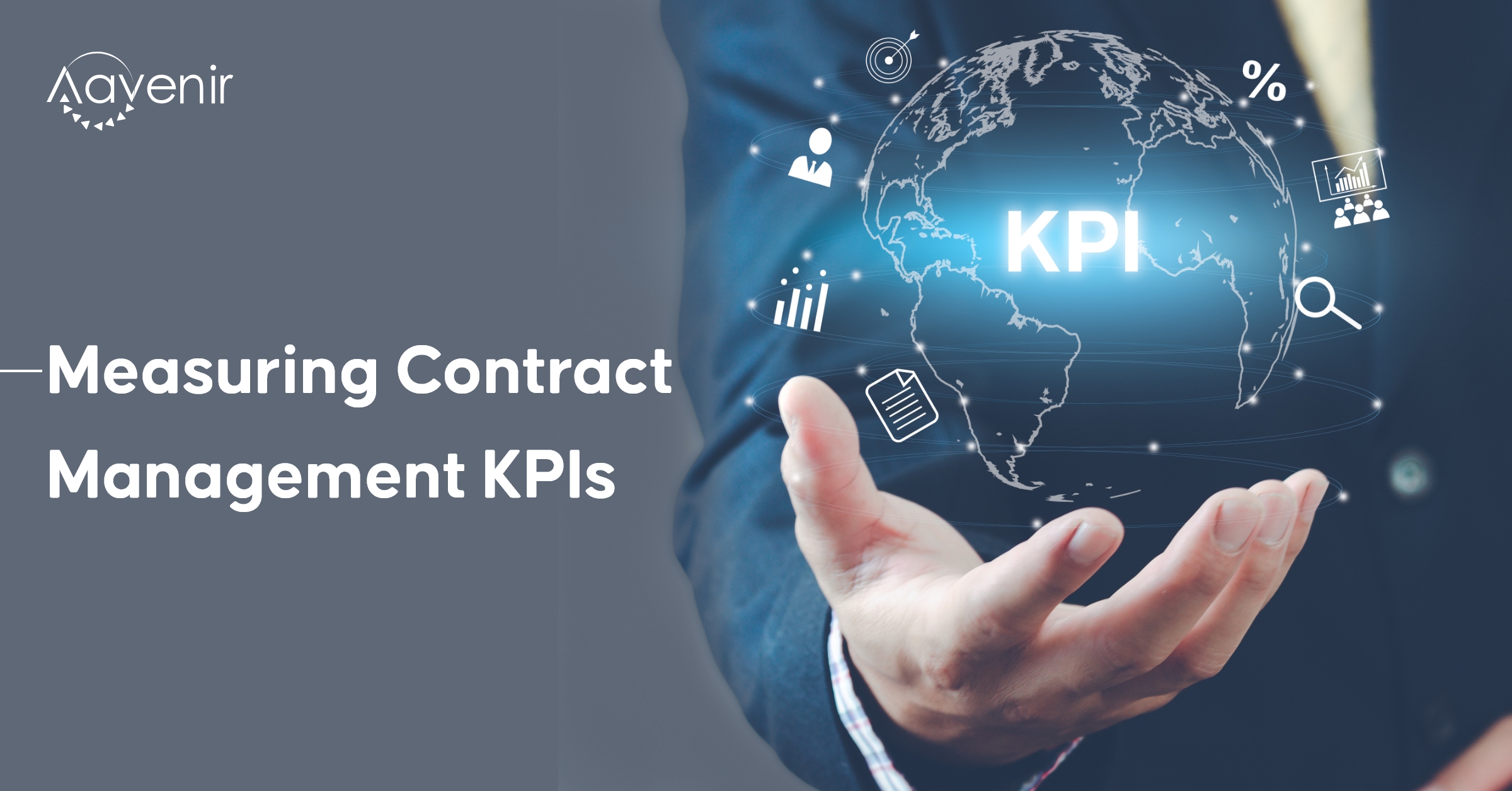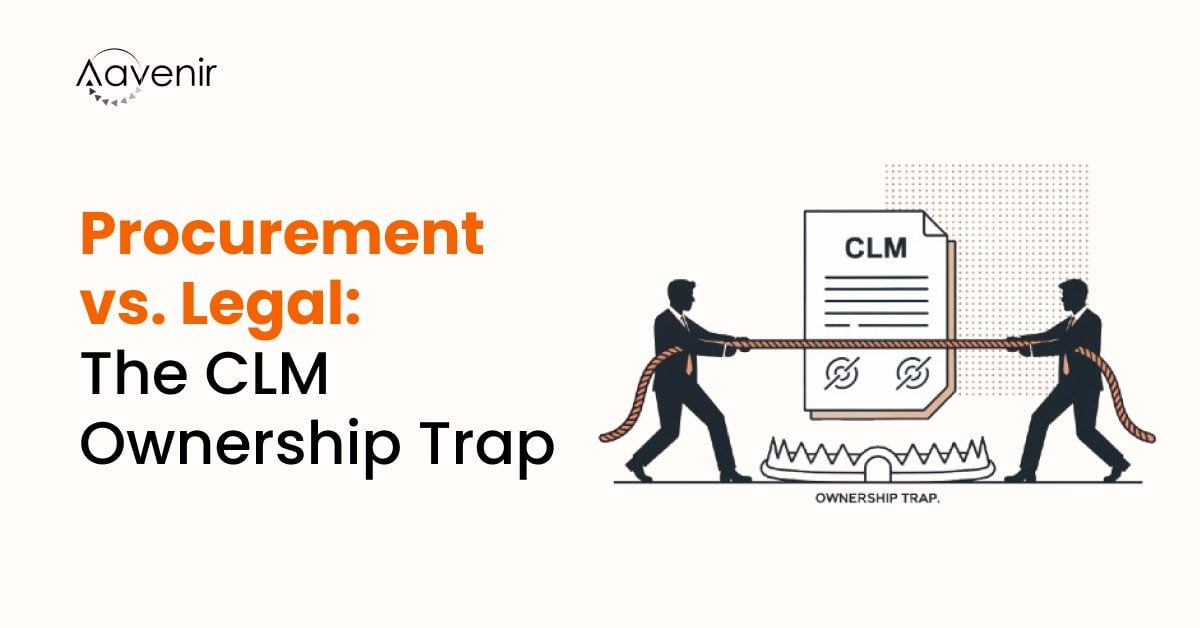You can’t manage what you can’t measure! The same applies to contract lifecycle management. So, irrespective of the industry and organization you serve, contract management KPIs are always a must. Monitoring and measuring contract management KPIs is essential to ensure that contracts are managed effectively.
Effective contract management can lead to cost savings, improved supplier relationships, and better overall business performance. In addition, it can help organizations identify potential issues or disputes before they escalate, allowing them to address them proactively by minimizing risks and realizing the potential contract value.
What KPIs should be monitored and measured for contract management are discussed here at length! And how these KPIs can be managed and met with the help of AI-driven contract analytics will also be covered in this blog; sit tight!
Key Contract Management KPIs contract manager should monitor.
These are some of the contract management KPI examples; depending on the industry and the organization, the KPIs could vary. However, the following can serve as a good starting point.
1. Contract Renewal Rate
An ideal contract renewal rate will vary depending on the industry and type of contract. However, a high contract renewal rate is generally considered a positive indicator of effective contract management. Renewal rates above 80% or 90% are considered to be good. It’s important to note that renewing all contracts is not always desirable; some contracts may need to be renegotiated, replaced, or even terminated; therefore, a high renewal rate does not always mean a good outcome.
Evaluating the renewal rate is a significant KPI for contract management in the context of the organization’s overall strategy and objectives, and to track the reasons for non-renewals to identify areas for improvement. Contract managers should also compare the renewal rate to the industry standards to check if it’s above or below the average.
2. Contract Compliance Rate
The optimal rate of contract adherence will vary depending on the specific organization and its respective industry. Nevertheless, a high contract compliance rate is generally considered a positive indicator of effective contract management. Typically, a compliance rate of 90% or above is considered good. However, it’s important to note that a high compliance rate does not always mean that the contracts are favorable to the organization. Still, it means that the organization is aware of and is following the terms agreed on in the contract.
It’s also essential to evaluate the compliance rate in the context of the organization’s overall strategy and objectives and track the reasons for non-compliance to identify areas for improvement.
In some industries, such as healthcare, finance, and government, due to the nature of the contracts and the regulations involved, the compliance rate is adjudged to be 100%.
3. Time-to-Signature / Time-to-Contract Award
The ideal period for a time-to-contract award varies depending on the complexity of the procurement process, your organization, and the industry you serve. Time-to-signature, the amount of time it takes for a contract to be signed, can significantly impact contract management. However, a shorter time limit is considered a positive indicator of an efficient procurement process.
For example, in some industries like construction or IT, the time-to-contract award is measured in months, while in other sectors like retail or consulting, it could be measured in weeks.
- Delays in obtaining necessary goods or services: the longer it takes to sign a contract, the longer it will take for the organization to receive the goods or services outlined in the contract.
- Increased costs: a longer time-to-signature can lead to increased costs associated with the procurement process, such as legal and administrative costs.
- Reduced competitiveness: a longer time-to-signature can make an organization less competitive, as it takes longer to make decisions and secure necessary goods or services.
- Reduced supplier satisfaction: a longer time-to-signature can lead to reduced supplier satisfaction, as suppliers may view the organization as slow or inefficient.
Having a shorter period for a time-to-contract award can have several benefits for an organization, such as:
- Reducing the time and costs associated with the procurement process
- Allowing the organization to secure necessary goods or services more quickly
- Increasing the competitiveness of the organization by allowing it to make quicker decisions
- Improving the supplier’s perception of the organization by showing a straightforward and transparent procurement process
It’s essential to evaluate the time frame in the context of the organization’s overall strategy and objectives and also track the reasons for delays to identify areas for improvement. You should also compare the time-to-contract award to the industry standards to check if it’s above or below the average. In addition, automating the contract management process, using e-signatures, and streamlining the contract review and approval process can help reduce the time-to-signature. There are various AI-based contract management platforms offering features for eSignature adaption and workflow acceleration.
4. Contracts Signed vs. Contracts Targeted
The number of contracts signed vs. the number of targeted contracts can significantly impact the overall enterprise. If the organization is not reaching its targeted number of contracts, it may be a sign of issues with the contract management process. On the other hand, if an organization consistently exceeds its targeted number of contracts, it may indicate that the contract management process is working well, and the organization has a competitive advantage.
A high number of contracts signed compared to the target can have several benefits, such as:
- Increased revenue: Signing more contracts can boost the enterprise’s revenue as more goods and services are sold.
- Improved competitiveness: Signing more contracts can make the enterprise more competitive, as it is securing more business.
- Improved supplier relationships: Signing more contracts can lead to enhanced relationships with suppliers, as the enterprise is viewed as a reliable and desirable partner.
It is vital to track the number of contracts signed vs. the number of contracts targeted to identify areas for improvement and compare it to the industry standards. It could be necessary to adjust the target based on the market conditions, competitiveness, or the enterprise’s capacity.
Also, an analysis of the reasons for not reaching the target could be helpful, like the sales process, the pricing strategy, or the contract terms. In both cases, organizations should track and analyze the KPIs to identify and address any bottlenecks or obstacles preventing the organization from reaching its targeted number of contracts.
5. Contract Termination Rate
Contract termination rates are the percentage of contracts terminated before their expiration date. Tracking and analyzing the contract termination rate is crucial for organizations because it can provide insight into areas where they can improve. It also indicates the strength of relationships with suppliers and partners and the level of trust and loyalty they have to the organization.
A high contract termination rate can indicate several issues within the organization, such as:
- Poor contract negotiation and drafting resulting in one-sided or unrealistic terms
- Lack of proper communication and alignment between the internal teams and external partners
- Poor supplier or partner performance leading to a breach of contract or non-compliance
- Inadequate contract monitoring and enforcement
However, a low contract termination rate can be a good sign that the organization is effectively managing its contracts, that the contracts are well-written, fair, and balanced, and that the organization is effectively communicating and working with its suppliers and partners.
Signing Off
There are many other aspects of contract lifecycle management.
Use this Contract Scorecard to measure the performance of your contracts manually.
However, manual methods are apt when your contract volume is significantly low. Enterprises handling hundreds and thousands of contracts need an efficient contract management solution to manage the end-to-end process and measure its performance. You need not worry about measuring and monitoring contract management performance metrics using an AI-enabled CLM solution. For example, Aavenir Contractflow offers custom contract management KPI dashboards and analytics, which users can configure further to create custom visual reports. It can help you with intelligent insights about the areas that need your immediate attention.



